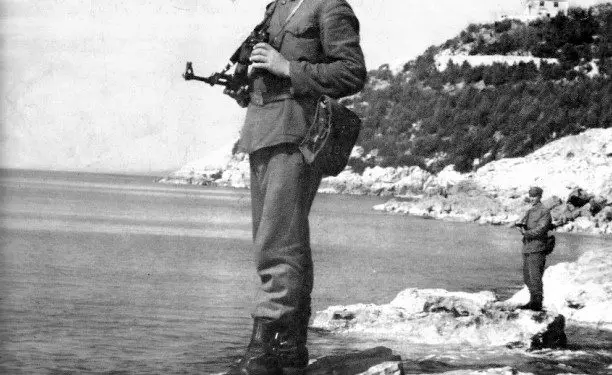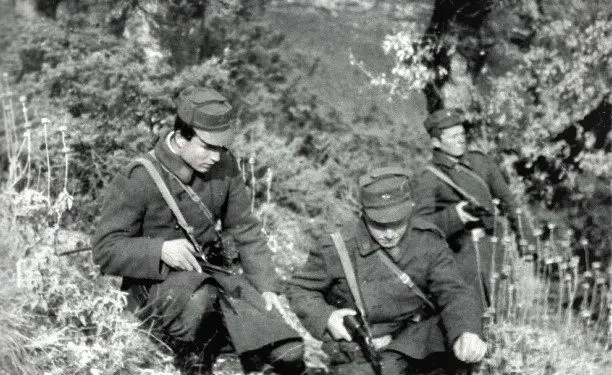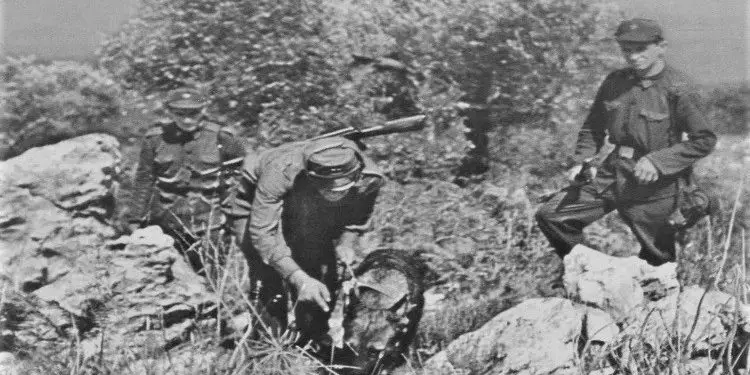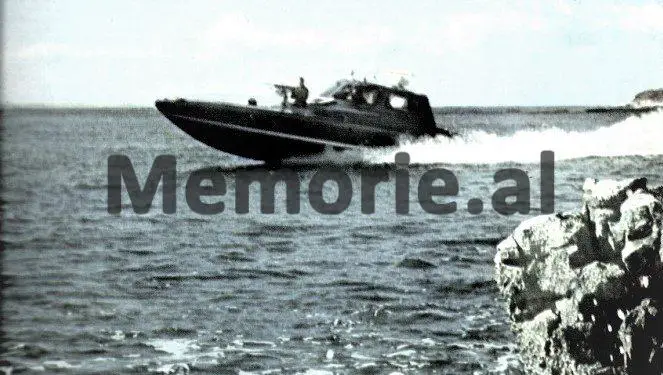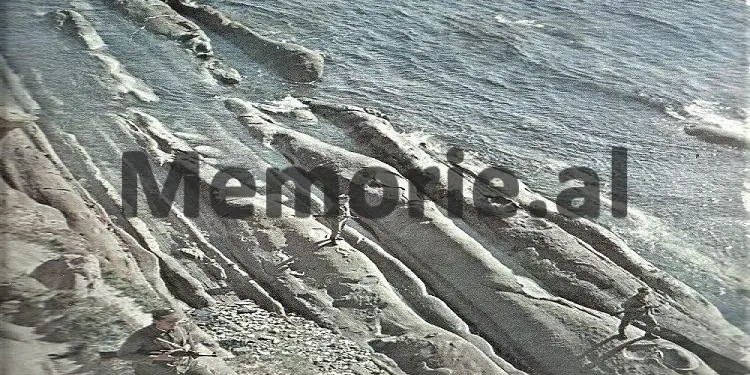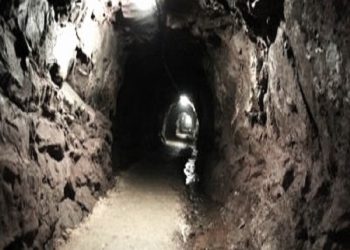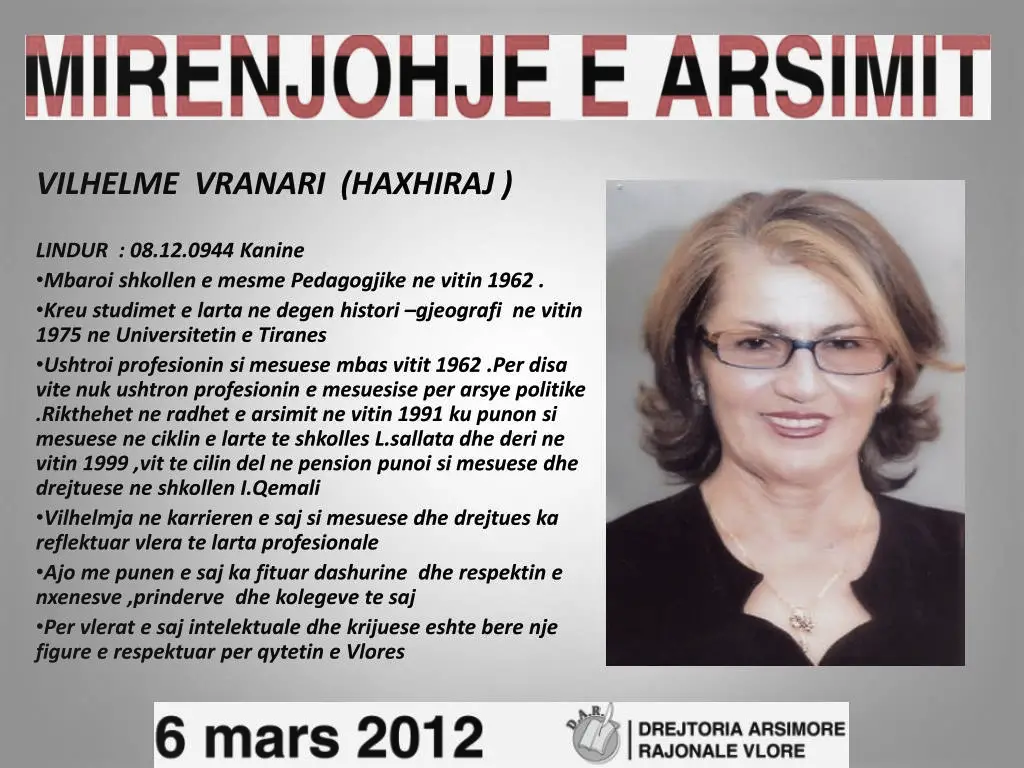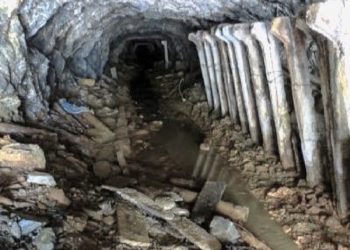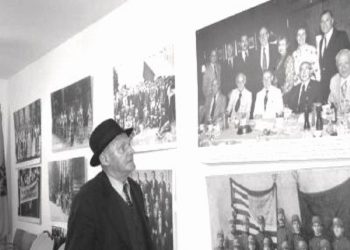Memorie.al / On May 8, 1990, the Presidium of the People’s Assembly of the People’s Socialist Republic of Albania approved the change in the Criminal Code, according to which crossing the borders no longer constituted treason against the homeland. After the establishment of the communist regime and during the entire period of this regime, many Albanians, not pressured by the strong communist propaganda, left the country. But during these attempts to escape, thousands of Albanians were killed at the border or lost forever. The official figure is given by the Ministry of Internal Affairs, which informed the Labor Party that until 1990 (not including the departure of July 2), 14 thousand people had left Albania at an advanced age.
This figure, of course, did not include the other figure of those who fled in 1944, when the communists took power. After many years of Communist Party rule, in the years 1988-1990 there was an increase in the number of escapes from the country, accompanied by mass killings at the border. The whole year 1990, from the beginning to the end, is covered by almost the same murders, conscious and painful. This book, therefore, is a complete compilation of documents on these border killings. “Europe Day”, widely celebrated on the continent as a victory over Nazism and totalitarianism, in Albania, 45 years after the end of the Second World War, proved that escape attempts continued to turn out to be unfortunate.
“At the foundation of the educational, military – professional and technical work of the Border Forces are: the Marxist – Leninist theory of our Party, the teachings of Comrade Enver Hoxha and the first secretary of the Central Committee of the ALP, Comrade Ramiz Alia, the military art of war popular and border protection”. (“Regulations of the border service; units, checkpoints, points, posts, border ships; approved by ministerial order no. 01-40, dated 13.10.1989).
The border of the People’s Socialist Republic of Albania was the last wire of the big prison, where about 3 million people lived during the regimes of Enver Hoxha and Ramiz Ali. The large prison built during the years of communist rule, started from the individual’s house and ended across the fence of the state border. In order to get to the free world, in a country where no rights were respected or guaranteed, you had to go through many gaps. The geographical circumstances had made the state border of Albania a difficult crossing area. Adding to these the harshness of the regime, we came to a fence difficult to pass by the population that wanted to pass it for political or economic reasons. In the practice of defining borders, the following are encountered:
-Orographic boundaries, which are removed with the help of the geographical features of the country, based on the river bed, the hill, the forest, the sea coast, etc.
-Geometric borders, which divide the territory of one state with another in a straight line from one point to another. In addition to these, there are also astronomical limits that coincided with the parallel or meridian.
The territory of the Albanian state has a long border of 1094 kilometers, consisting of 627 km. land, 316 km. maritime (coastline 472 km.), 73 km lake, 48 km. river, 30 km. river. With the then Yugoslav state, the border was 529 km long (380 km land, 39 km river, 66 km lake, 22 km stream, 22 seas).
With the Greek state. the border was 349 km long. (247 km. land, 78 km. sea, 9 km. river, 7 km. lake and 8 km. stream).
The border. it was shown with main and intermediate pyramids. With the then Yugoslav state, 176 main and 1254 intermediate pyramids were located. With Greece, 177 main.
In the lakes, the boundary line was indicated by illuminated signs. In rivers and streams, the line was in the middle of the main flow of water, while in navigable rivers, at their greatest depth. At sea the boundary line begins 15 miles into the water.
In the second chapter of the aforementioned regulation, “Protection of the state border in the snowy and forested mountainous sector”, of regulation no. 01-40, border units were given the right to open fire, or to go more with the “attacking spirit”, using bombs. Based on the fact that most of the state border of Albania lies in the mountainous and forested sector, automatically, the units had the right to shoot, in the aforementioned natural circumstances. The same regulation, in the chapter of; “rules for the ways of opening fire”, among other things, has sanctioned that; opening fire; was done; “against the civilians and soldiers of the SSR; who try to escape in land, river, lake, sea sectors with; or without means”.
The unit calls them “hands up”, when they do not obey, it fires a warning shot (in the air), in case they continue the attempt, and neutralizing fire is opened, if neutralization and annihilation are not possible”.
PES (Electro Signaling Barrier), was also known as “clone”.
It served as a “mechanical barrier”, which brought “psychological impact on the offender.” The system showed signal delivery in the sector with lengths of 500 and 250 meters. In the People’s Socialist Republic of Albania, the border was guarded by the Border Forces. The Border Directorate was one of the three main pillars of the Ministry of Internal Affairs (Security, Police, and Border). It exercised the task of guarding the border, along the land, river, lake and sea border, through border battalions located in every border district, including the coastal area.
In general, a main village close to the border line was designated, while the coordination was done by the Department of Internal Affairs of the respective district. The battalions in question depended on the border posts, in which cadres and soldiers who performed mandatory military service served. The soldiers were selected from a preliminary work of the Operative Workers of the neighborhoods or villages where they lived. A careful research brought to the border soldiers loyal to the regime, with guaranteed communist origins, fed to the extreme with hatred towards the “enemy”, be it external or internal. This agitation that poured over their brains, add the ignorance or lack of training of those who held the “Kalashnikovs” in their hands, made them a dangerous instrument in the hands of the authorities.
Every “border violator”, from the inside or “saboteur” from the outside, had created terror for the border guards. They should be arrested, or they should be executed. On top of all this, the propaganda had also created myths about “brave frontiersmen”, about others who had given their lives to protect “victories”, about the pioneer Nik Pjetër Ndreka, who was killed by “saboteurs”, etc. Likewise, villagers from the border areas were decorated “for vigilance and bravery”, which made it possible to catch the “violators”. In addition to the border forces, they were also assisted by the voluntary forces of popular self-defense, the sub-departments and departments of the Ministry of People’s Defense and the Ministry of Internal Affairs.
For every frontiersman, Albania was a paradise and the world outside a hell of evils. The service at the border was done in the form of patrolling, as the case may be, on land, lake or sea. It was here that the clash between those who wanted to escape and those who were assigned to keep the communist fence strong in the country could happen. The structure of a border post consisted of a commander, a commissar, a service sub-officer, a dog sub-officer and soldiers. Local volunteer forces were ready near every border post. The border before reaching the official line between the two states was surrounded by a wire fence called a clone. This was the signal for every move that could be made. On February 2, 1989, Politburo member Simon Stefani was appointed deputy prime minister and minister of internal affairs for the first time. This ministry moved to a new organization.
The profiles and dependencies of the directorates were changed for the deputy ministers. While the Border Directorate changed its name, becoming the Border Forces Command. Simon Stefani, was the person who mostly showed great zeal in executions at the border. Former welder Stefani, comfortable for years in the chair of the ruler, (member of the Political Bureau and Secretary of the Central Committee of PPSh) gave guarantees to the border forces, that only with murder; the unstoppable exodus that had started could be stopped. In July 1990, Minister Hekuran Isai arrives. Seeing that murders at the border had really become a problem, he tried to make sure that there were not so many of them, but the reality did not change much.
In information dated December 1, 1990, by the head of the Gjirokastra Internal Affairs Branch, Jorgaq Mihali, for the Border Forces Command and the Ministry of Internal Affairs, it was said that during the period January – November 1990, 158 people crossed the border illegally residents of that district, 11 border soldiers and 29 people from other districts, making a total of 198 people. A total of 113 people were arrested, of which 48 were from Gjirokastra and 75 from other districts. “In implementation of the tasks and orientations of the District Party Committee, in our body there was a discussion and confrontation with the letter of the Central Committee of the Party, addressed to the basic organizations of the party, where, with a spirit of self-criticism, the flaws and weaknesses of each sector were brought out of the framework and the tasks for their elimination were determined, to build the work to respond to you, as comrade Ramiz Alia teaches us, to the current hostile activity of external and internal enemies”.
From the discussions and confrontations with the Central Committee’s letter addressed to the basic organizations of the Party, it emerged that the conclusion drawn by the Central Committee, that in these situations, the attack against socialism is more ferocious than ever and this also applies to our district” – it is said in the information that the head of the Peshkopi Internal Affairs Department, Enver Ademi, sends on September 12, 1990 to the first secretary of the APS Committee, Osman Murati. In the same material, it is proposed that the border be guarded by the army, as there were many forces to do so. Taken from “Killings on the border in 1990”, published by ISKK.
In a specific case, not a few times, the well-known researcher Kastriot Dervishi, has brought painful events from the attempt of young Albanians to escape, until the last hours of communism, as was earlier the event published with documents and photos showing 4 young men, who on August 23, 1990, were killed at the Border Post of Rehova, as they were trying to cross the Albanian border to the Greek state. In one of his publications, he has shown details of the event, which we present in full: “In the early hours of the morning, on August 23, 1990, young people from Korça left the hotel (in Erseka) where they were staying and together with other friends from Erseka, head to the border with Greece, at the Rehova border post.
The group of young people is shot by the border post unit. In conclusion, the following were killed: Petrit Bashkim Ajdini from Korça, 26 years old; Artur Xhevahir Kîrcelli from Korça, 25 years old; Niko Stefan Joti, from Erseka, 24 years old; Safet Irfan Rrapo, from Erseka, 31 years old. Avni Sami Rumi, 27 years old from Cologne, was arrested and sentenced to 4 years in prison. Only Pandush Thanas Nica, 29 years old from Korça, managed to escape. The body of Safet Rrapo was found later after he had also received injuries from the fall from the cliff. As is rare, the dead bodies of young people were returned to their families. The funeral ceremony in Korça for two young men turned into a powerful anti-communist demonstration. For this reason, 12 people were detained and sentenced. This publication is dedicated to the memories of these young people who lost their lives at a young age, tragically, just when they thought Albania was changing.
In another case, the former head of the Archive, Dervishi, also brought the event fixed in the memory of Albanians, in the feature film “Silent Duel”, where a failed escape into the sea is shown. It is about, in reality, that; “the claim was that, on June 1, 1947, the motorboat was launched into the sea by professional sailors and brought ashore by a man who had never driven such a craft. The whole event took place within 4 hours. It cannot have developed far from the coast. The event took place between 4 people. The fourth who became a “National Hero” didn’t even know how to drive the motorcycle. There were no commissary stories here, nor others that have been seen in the film, with civilians entering the motovede. Was it really an escape from 22-year-old Spiro Stojan Kota, or was it a bloodbath in the middle of the sea and an event exploited afterwards?
All the signs given lead to the reasoning that; a man, who has not been driving, cannot for two hours; to return the motovede, he could not become a hero.
But anyway, the regime needs it as an event, not just to use it as an example; within the Armed Forces, but also to show the people that this is how those who will leave Albania end up. The event has been little investigated. There is a lack of data that would be related to issues of expertise or other issues of this type. Only a dry report is what is documented, meanwhile, that those who experienced it are no longer alive.
Of course, it always remains intriguing how three seasoned sailors, who could have jumped overboard at will, allowed themselves to be killed in that manner. As the strongest thesis, there is the version that a quarrel between them was all there was, and this was not far from the coast, because if it was far, Spiro Kote, without a compass, would wander in vain through the sea. Some time ago, our colleague Fatos Baxhaku published an interesting report from Durrës, related to this event. The reportage brings unspoken testimonies from the people who are involved in this history as well as those who still experience it through memories of the past. Killed in this event were: 1-Captain Vlash Bushi, son of Vasili and Katerina, born July 5, 1912, born and resident in Durrës; 2-Marinar Xhemal Kërniqi, son of Mustafa and Bedria, born February 13, 1920, born in Shkodër and resident in Durrës; 3-Seaman Enver Kruçi, from Alushi, born June 24, 1924, born and resident in Shkodër, all three in the service of the Captaincy of the Port of Durrës, deceiving the guard of the motorboat “Mujo Ulqinaku”, sailor Spiro Kote, under different pretexts set out to escape to Italy.
In the report dated June 5, 1947, of the Directorate of Internal Affairs, Durrës, among other things, it is stated: “When they had left 30 miles near the Mezokanal, they informed the sailor on guard, the intention of the betrayal and the flight to Italy. Then, the sailor in question, seeing the betrayal and deception that they had done to him, thought and took measures to kill them, with a machine gun that was hanging in the sleeping room of the motorboat. Taking advantage of the fact that the two traitors were at the wheel, he kills the third in the room and then kills the other two, one by one. After performing this deed, he took the command of the motorboat himself (although he had never used it, as he was a young sailor) and returned to Durrës, at 20.00, informing the Captain about the incident and how he could have avoided the betrayal”.
In a report dated 4.6.1947, by the political secretary of Durrës, Iljaz Reka, for the Regional Committee of the Communist Party of Albania, positive things are written about Spiro Koten, which has increased the suspicions that this is an event of made up. The biography drawn up by the local NPSH does not appreciate Spiro Koten at all. The origin of the family is from Macedonia, originally in Korça. My father came to Durrës as a child, 16 years ago. Spiro Kote was born in Korçë, but came to Durrës as a child. Finishes primary and 2nd grade of Agriculture in Kavaje. There he saw partisans twice and began to sympathize with them.
In 1943, Spiro leaves school and goes to Tirana where he works as a carpenter. In 1945, he came to Durrës, where he worked as a carpenter in the port. Called to arms in Gjirokastra. Since he worked at the port, they keep him there. In 1946, 10 days before the event, he joined the ranks of the Communist Youth, but did not participate in the meeting. “He spent his life before he became a soldier in suffering, i.e. constantly with hard work. In our city, it was not organized, because in childhood, it did not have a good moral attitude. Now it gives you the impression of a simple and innocent worker, an active and disciplined worker. Throughout the occupation, he was disorganized, but he was interested in finding communiques and reading them” – concludes Iljaz Reka’s report on him.
With decree no. 343, dated 6.6.1947, the Presidium of the People’s Assembly, Spiron Koten, decorated him with the National Hero order, with this motivation: “Equipped with the highest feelings of love for the homeland of the people, with heroism, self-sacrifice and loyalty his infinite, became the example of the loyal warrior of the national army”. His story, given not as it happened, would certainly be part of the regime’s propaganda, to motivate the espionage, in cases of escapes, as well as to make as many gullible as possible, to imitate the “bravery” of the film’s character”, he writes. Dervish for this case, earlier of the communist regime. Memorie.al




